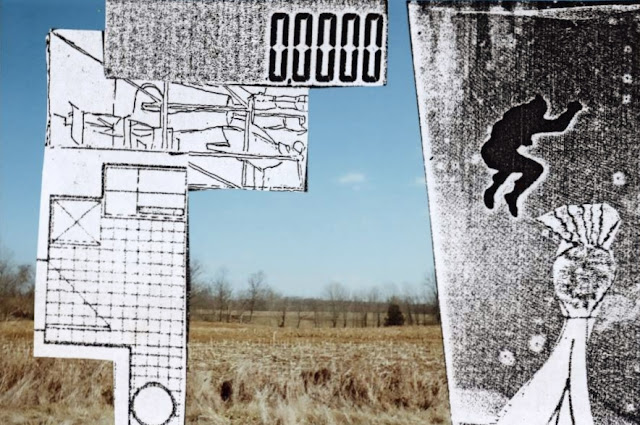Raymond wanted a job more than anything else in the world. Bill and I talk about that sometimes. What does "having a job" mean anyway? What did it mean to him? Here was a guy who couldn't really speak that well, who seemed a little bit, well, weird, to people, and who had a passion for life that seems freakishly beautiful now. Here was a guy who created a persona and lifestyle out of what he wanted and expected from life, and that persona and lifestyle became an iconic spirit that haunted this little city we live in. At the core of that self-made identity is "construction worker." (The clown stuff is decoration; the foundation for his identity, the outfit Raymond festooned with a clown collar, was overalls.)
When you go through the stuff he left behind, you find the accoutrements of the working class. Tool boxes, fluorescent mesh vests, hard hats, gloves, overalls. You find the wardrobe and tool-chest of someone who spent his life working. But because of his disability, and the obstacles that caused, he was often shut out of opportunities. Raymond had a dishwashing job at a hotel downtown when he was young. He had a job for a time at M. E. Heuck, a manufacturer here in town of household products. Toward the end of his life he worked in the sheltered workshop at Goodwill in Woodlawn. But Raymond's true calling was construction work -- probably influenced by his father. Raymond craved, to the day before he died, getting a job at a construction joint. Bill can tell you the story about Raymond calling him that day before he passed away, wanting to fill out an application. The killer for Raymond's dream was that no construction company or utility company would hire him because he didn't have a driver's license. Plus maybe because of his disability.
I wonder if Raymond were around today if we might be able to help him get that job he wanted.
God knows we helped him have art shows. He loved that. But I always had the suspicion, so does Bill, that he resorted to the drawing because he couldn't be a part of the action he was inspired by. He invented a position for himself: documentarian, recorder of demolition sites, utility digs, street work. He set up his equipment along side those sites not only to draw, but to be a part of what he was drawing. And a lot of the construction and utility workers we've spoken to concerning Raymond remark on this. Raymond became a part of their team, but not on payroll. A lot of the items in his archive (the tool boxes, the hard hats) were gifts to him from "co-workers," people who wanted him to be a part of the action, even though they didn't know any other way how besides giving him assorted props.
What if Raymond would have had a job he loved?
I think he would have still made art. I think his work would have informed what he did artistically. He would have been happier maybe. Maybe he would have lived longer? Who knows?
So as I look toward the future I'm thinking one thing we might be doing is looking into creating an organization that somehow helps people like Raymond -- creative, energetic, focused people -- get real jobs.
Maybe this is the next move to make? We have created a day program with a mural commemorating him on it. We have created a gallery in his name. What about an organization that is focused on the most important issue of his life: getting hired. Making a living. Actually being a part of something, and getting a paycheck for it.
Stay tuned.
Below are items from Raymond's archive that touch on his love of work. The notes are notes to himself to inquire about employment, probably jotted down while he was on his way to a demolition site to draw.

.jpg)
.jpg)


.jpg)






.jpg)












.jpg)
.jpg)
.jpg)
.jpg)
.jpg)
.jpg)
.jpg)
.jpg)
